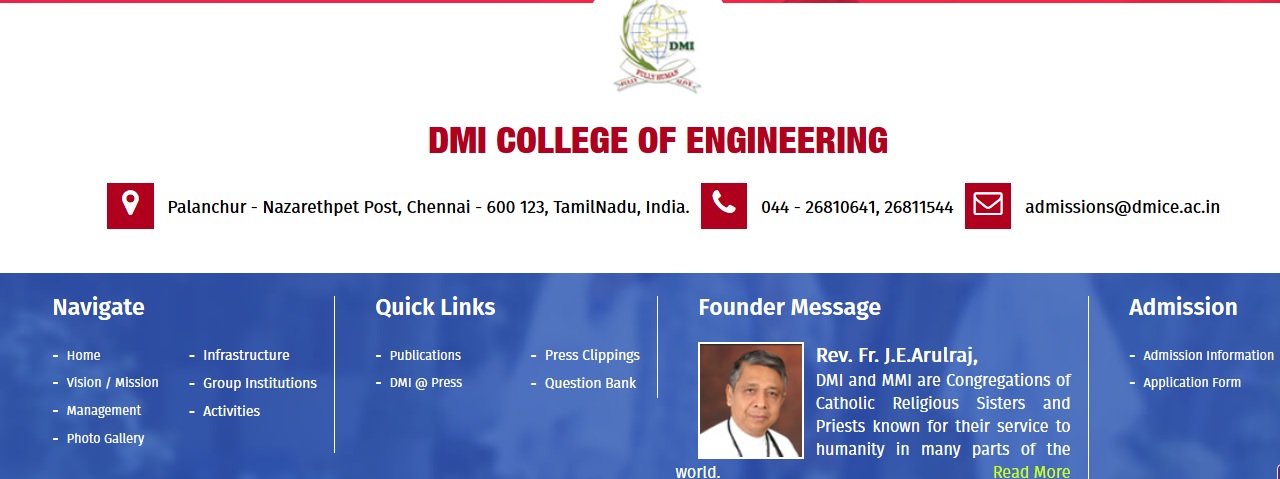CE2032 Pavement Engineering Question Bank : dmice.ac.in
Name of the College : DMI College OF Engineering
Subject : Pavement Engineering
Website : http://dmice.ac.in/question-bank/
Document type : Question Bank
Download Pavement Engineering Question Paper : https://www.pdfquestion.in/uploads/dmice.ac.in/332-CE2032.docx
DMICE Pavement Engineering Sample Question Paper
TYPES OF PAVEMENT AND STRESS DISTRIBUTION ON LAYERED SYSTEM :
2MARKS
Related / Similar Question Paper :
DMICE B.E Multimedia Compression Question Bank
Unit – I
1. Define Pavement?
2. What are the components of rigid pavement?
3. List some of the common strength tests for the soil sub grade?
4. State the assumption made in Boussinesq’s stress distribution theory?
5. What are the functions of surface in a flexible pavement?

6. State the difference between flexible and rigid pavements?
7. What are the different types of pavement?
8. What is meant by composite pavement?
9. Merits & Demerits of Rigid pavement?
10. Define ESWL?
11. Define rigidity factor?
12. What are the assumptions of ESWL?
13. What are the factors to be considered for the design of pavement?
14. State the basic requirements of pavement?
15. What is rigid factor in the design of highway pavement?
16. What is the function of soil sub grade?
17. What is the function of base coarse?
18. What is the function of wearing coarse?
19. How do you calculate the ESWL at a given depth below the pavement for a dual wheel assembly?
20. Classify the pavements based on the structural behavior?
Unit – II
2MARKS
1. What are the methods adopted for the design of flexible pavements?
2. State the limitations of CBR method of pavement design?
3. Define vehicle damage factor?
4. Define lane distribution factor?
5. Find the group index of a soil that has fraction passing 75 micron as 0%.
6. In-situ CBR tests are not recommended for design purposes. Why?
7. Mention the various approaches of flexible pavement design?
8. What is meant by VDF?
9. Mention the limitations of Group Index method of pavement design?
10. What are the components of flexible pavements?
11. Define CBR?
12. What is traffic index?
13. Define Group index method?
14. Define stabilometer method?
15. Define McLeod method?
16. Define Bur mister method?
17. What is the consideration for design of flexible pavements?
18. Write the formula for computation of design traffic?
19. How to find the deflection of sub grade pavement?
20.Define PSI?
16 MARKS :
1. Briefly explain the IRC recommendations for the CBR method of flexible pavement design?
2. Explain McLeod method of flexible pavement design? Discuss the merits and demerits.
3. Explain the various design steps followed in California Resistance value method?
4. Explain the Burmister method of flexible pavement design?
5. How to find the thickness of each layer of flexible pavement by CBR method. Explain.
6. A plate-bearing test was carried out on a subgrade soil and for a deflection of 1.25mm; the pressure on 750mm plate was 120kpa. On a test section of base course 225mm thick the pressure on the plate was found to be 3ookpa for a deflection of 1.25mm. Determine the theoretical thickness of flexible pavement required for sustaining a single wheel load of 300KN with a tyre pressure of 1.8mpa ,Explain how the thickness to be provided is determined by conducting further more plate load tests.
7. Following are the data for the design of a flexible pavement.
(i)Design CBR: 1%
(ii)Terrain : Rolling plain
(iii)Two lane single carriageway road
(iv)Traffic in the year 2012(in both directions):345CV/day
(v)Expected year of completion of the project: 2014
(vi) Traffic growth rate per annum: 7.5%
(vii)Design life :15 years
The available materials with their CBR values are given below:
Materials murrum A murrum B Gravel with 6mm chips
CBR% 11 22 34
Design the pavements as per IRC:37-2001 and construct the pavement structure choosing any of the available materials.
8. Explain group index method of pavement design. What are the limitations of this method?
9. Al subgrade soil sample has the following properties :
Soil passing 0.075mmsieve =60%
Liquid Limit =55%
Plastic Limit =45%
Design the pavement section by G.I method for heavy traffic with over 400 commercial vehicles per day.
10. Discuss the advantages and limitations of CBR method of design.
I need important 2 marks in 2013 regulation.
I want questions bank for five units for 2013 regulation.
Can you also give answers for the questions?
I need 16 mark questions for all units.
Can you give another 3 unit question bank?
Can you give important questions for unit 3 – design of rigid pavements in pavement engineering?